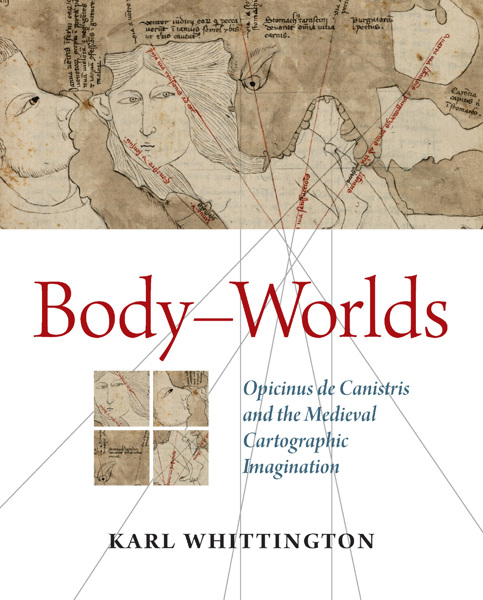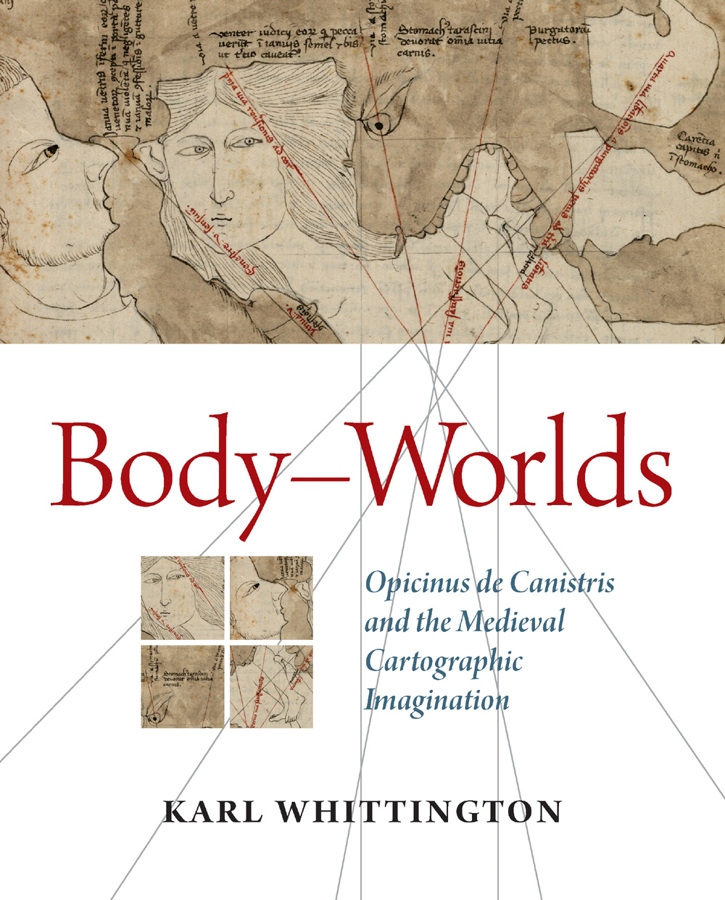
- Pages: approx. 212 p.
- Size:205 x 255 mm
- Illustrations:45 col.
- Language(s):English
- Publication Year:2016
- € 45,00 EXCL. VAT RETAIL PRICE
- ISBN: 978-0-88844-426-4
- Paperback
- Available
“Karl Whittington’s Body-Worlds brings Opicinus de Canistris’ idiosyncratic drawings out of the purely personal, mentally disturbed world to which they have generally been consigned into a more normative and accessible realm. To unlock their forms and meanings, Whittington persuasively compares the odd renderings to portolan charts used in marine navigation, which he sees as foundational to Opicinus’s project. And, building on the work of Michael Camille and Victoria Morse, he subjects the drawings to a sensitive analysis that never flattens these indisputably eccentric works but, in the end, enhances their innovative nature even while rendering it understandable.”
– Herbert L. Kessler, Johns Hopkins University
“Opicinus’s drawings contribute in new and unexpected ways to our understanding of the late medieval church, the history of vision and sensibilities, the body, the history of cartography, and Mediterranean studies. Karl Whittington is an intelligent reader of these very difficult works and a wonderful guide for readers encountering this material for the first time. His book will open up an important and under-utilized corpus for further study and should spark an on-going conversation about these intriguing manuscripts.”
– Victoria Morse, Carleton College
“In Body-Worlds, Karl Whittington has produced a magisterial study of the enigmatic drawings of Opicinus de Canistris. Focusing on a key grouping within the larger corpus of images, he examines some two dozen illustrations that superimpose human bodies on the form of the earth, its seas, and its continents. Two questions guide his task: why would this late medieval thinker adapt a diagrammatic form based on current understanding of cartography; and why turn this image into a system for analyzing broad theological and philosophical questions of the day? Although some scholars believe that Opicinus suffered from a form of physical and mental disorder, and that the drawings reflect a disturbed state of mind, Whittington’s complex study indicates otherwise. Whittington does justice to the rich multivalent nature of these drawings, showing us how Opicinus understood the relationship between the body and cosmos, as well as how sexuality and gender worked as important conceptual tools in his visionary system.”
– Catherine Harding, University of Victoria
In 1334, an Italian priest named Opicinus de Canistris fell ill and experienced a divine vision of continents and oceans transformed into human figures, a vision which inspired numerous drawings. While they relate closely to contemporary maps and seacharts, religious iconography, medical illustration, and cosmological diagrams, Opicinus’s drawings cannot be assimilated to any of these categories. In their beautiful strangeness they complicate many of our assumptions about medieval visual culture, and spark lines of inquiry into the interplay of religion and science, the practice of experimentation, the operations of allegory in the fourteenth century, and ultimately into the status of representation itself.

